Reviews
Lloyd Kaufman and Michael Herz
USA, 1984
Credits
Review by David Carter
Posted on 08 May 2012
Source Troma DVD
Categories Favorites: Transformations
The story of The Toxic Avenger begins in earnest when nebbish weakling Melvin Ferd falls head-first into a vat of toxic waste and begins his painful transformation into the titular superhero-cum-monster. As the skin begins to melt from Melvin’s body, a group of onlookers forms around him. They are the patrons of the gym where he works, the same tormentors who caused his ghastly predicament who, upon seeing that their previously harmless prank has turned deadly, laugh at the man dying at their feet. The seriousness of the situation becomes evident when a police officer attempting to help Melvin bursts into flames after touching him. Melvin himself begins to burn next, running wildly down the street to the safety of his home. Attempting to save himself by submerging in a tub of water, Melvin’s skin begins to bubble, his features become indistinct green-gray lumps, and his hair falls out. Finally, his slight frame swells into that of a taller and more muscular - but truly monstrous - physique.
Given that The Toxic Avenger is a Troma film, the gravity of this event is shattered by Melvin’s mother remarking that the sounds emanating from the bathroom must indicate that he’s finally going through puberty. That’s the paradox inherent in all of Troma’s films: they possess an overwhelming desire to not be taken seriously. Toxic Avenger was the studio’s first non-comedy feature, yet it retains much of the style of those earlier films, going after the easy laughs at every opportunity in particular. Troma’s basic premise is to create a low-brow aesthetic, yet one devoid of the camp and self-awareness present in works of John Waters and other filmmakers who have romanticized low culture. Therefore the scatological and sophomoric humor of The Toxic Avenger and the scores of Troma films that followed in its wake aren’t self-reflexive but instead sincere, and it is that sincerity that has garnered the studio legions of fans and an equally large group of detractors.
If one can look past Kaufman and Herz’s contrived gutter chic aesthetic, The Toxic Avenger is a strong film, both entertaining and surprisingly dense. Post-transformation, Melvin has mutated from a meek victim into a hulking monstrosity capable of doing whatever he pleases. He becomes a hero by accident, coincidentally being in the right place at the right time to mete out gory, arm-ripping justice. While foiling a restaurant robbery, Melvin saves and later becomes romantically involved with Sarah, a beautiful blind woman. The tragedy of his mutation has become a triumph. Melvin now has everything he desired in his previous life: power, respect, and love.
It isn’t enough, however; Melvin still desires revenge against the architects of his accident, the criminal quartet of Bozo, Slug, Wanda, and Julie. The newly dubbed “Monster Hero” becomes a true monster, revenging himself against the foursome in scenes reminiscent of a slasher film and equally brutal. Satisfied, Melvin and Sarah attempt to leave society completely, but are challenged by the forces of the mayor of Tromaville, upset that Melvin has been foiling his secret illegal enterprises.
Elements of horror are prevalent throughout The Toxic Avenger, but the film is more appropriately described as an inversion of superhero lore. Much like a darkly comic version of Spider-Man, The Toxic Avenger features a nerdy young man who gains superpowers through a nuclear accident but, in this instance, he becomes a disfigured pariah rather than a hero. This is a function of differing views of nuclear power - the early sixties’ view versus that of the eighties - but it is also a critique of the superhero genre as a whole. The mythos of Spider-Man, to sustain the example, dictates that a bullied orphan will, if given the chance, rise above what has happened to him and become a champion to everyone. The Toxic Avenger offers a more cynical perspective. Revenge is at the front of Melvin’s mind, both against Bozo and company and society as a whole. His “heroics” are in reality violent rampages where he wantonly murders anyone who gets in his way. In this, Kaufman and Herz are satirizing comic book and cinematic heroes, who are equally murderous and destructive as their villainous counterparts but are perceived differently by virtue of at whom their antisocial behavior is directed.
Bullying and its effects on young people would not become a pressing social issue until a decade after The Toxic Avenger, but the film offers a surprisingly sophisticated take on the topic. Melvin is an outcast at the health club where he works, and is thus the object of ridicule for Bozo and his gang of “beautiful people.” Since his transformation occurs at the culmination of their most egregious prank against him, there is a definite metaphorical aspect to the change from Melvin to “the Toxic Avenger.” Melvin was meek and forgiving, willing to let their torments go no matter how far things went. Their final prank went too far, transforming the kind Melvin into a literal and figurative monster; a being that takes out the internal rage they created within him on the whole of society. Again, similar concepts appear in slasher cinema, but the key difference in The Toxic Avenger is that Melvin remains a sympathetic character throughout. This is because we are introduced to him in his original state first and experience the bullying along with him, rather than it being told via flashback or used to justify his actions after the fact. The Toxic Avenger provides the justification for Melvin’s suppressed rage first, and thus his rampages are viewed as being as much Bozo’s fault as his own.
I won’t attempt to make an argument that there is an underlying social consciousness in The Toxic Avenger. I also won’t definitively state that there isn’t one, either. Lloyd Kaufman, the film’s director and the omnipresent public face of Troma, is a Yale graduate and was making a name for himself in mainstream cinema before creating Troma; therefore I consider it entirely possible that The Toxic Avenger was intended to work on more than one level. Furthermore, the fact that Troma is nearing its fortieth year speaks to Kaufman’s intelligence, and strengthens the case that The Toxic Avenger is more than fart jokes and bad puns.
The moment of Melvin’s transformation to “Toxie” onscreen was also a transforming moment for Troma. As its most successful property, The Toxic Avenger is synonymous with Troma - the character is the studio’s mascot - and the film’s fans are a large part of the studio’s continued existence. The Toxic Avenger has spawned four sequels (a fifth is on the way), a comic book, and an animated series featuring an eco- and family-friendly version of the character. The Toxic Avenger continues to undergo transformations; a Broadway musical is currently in production as is a big-budget, PG-13 rated remake.
More Favorites: Transformations
-
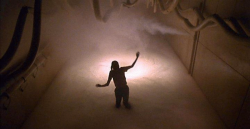
Altered States
1980 -
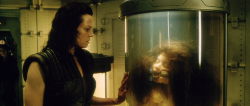
Alien: Resurrection
1997 -
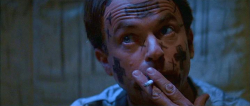
In the Mouth of Madness
1994 -
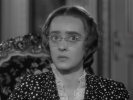
Now, Voyager
1942 -

Honey, I Shrunk the Kids
1989 -

The Toxic Avenger
1984 -
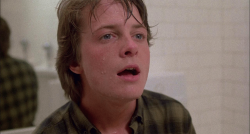
Teen Wolf
1985 -

Teen Wolf Too
1987 -

An American Werewolf in London
1981 -

The Curse of the Cat People
1944 -
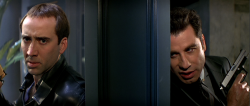
Face/Off
1997 -

That Obscure Object of Desire
1977 -

Now, Voyager
1942 -
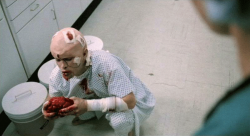
From Beyond
1986 -
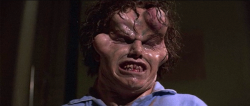
The Beast Within
1982 -
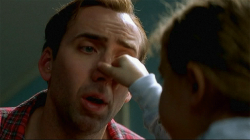
The Family Man
2000 -
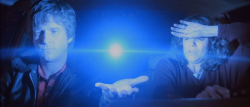
Starman
1984
We don’t do comments anymore, but you may contact us here or find us on Twitter or Facebook.



